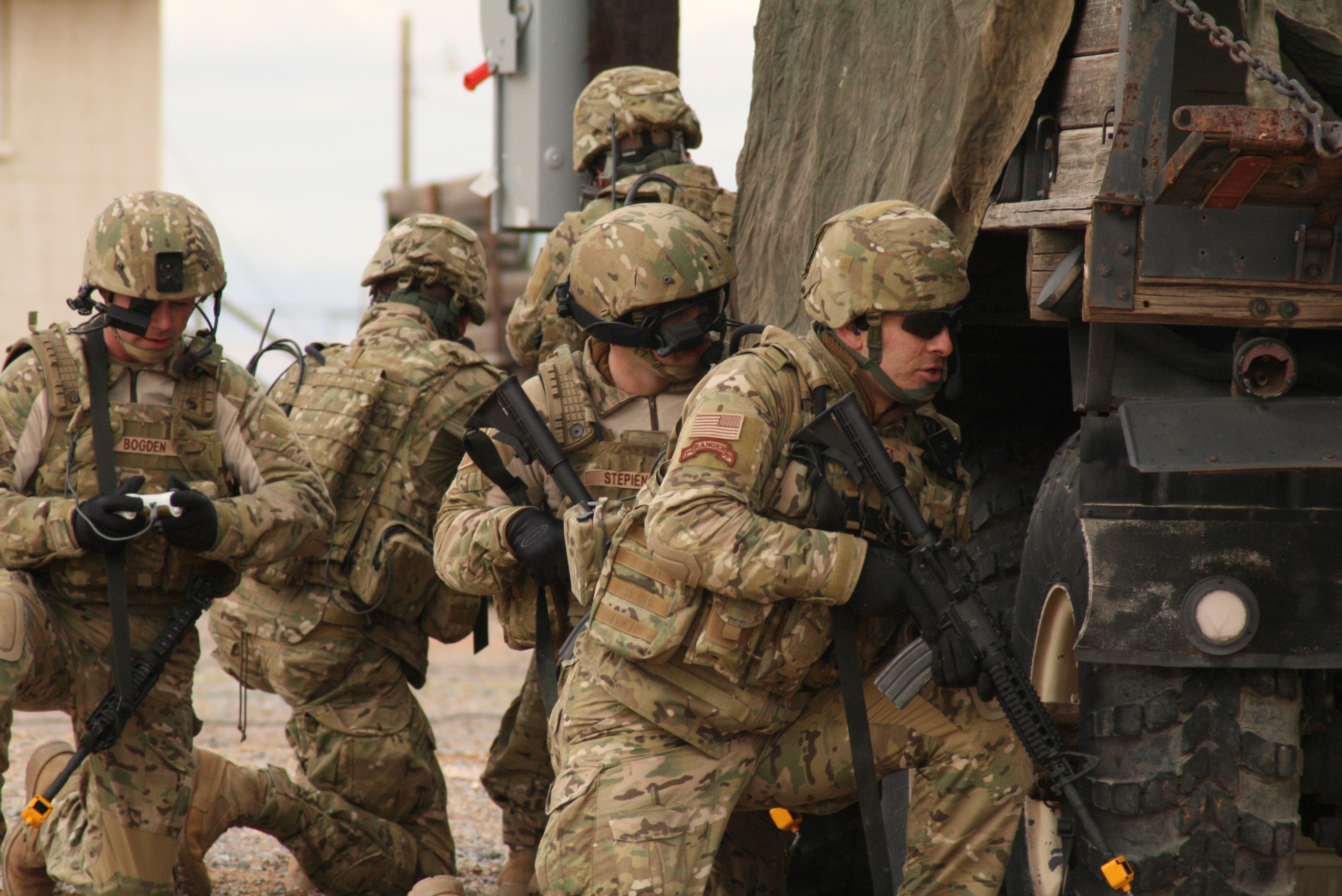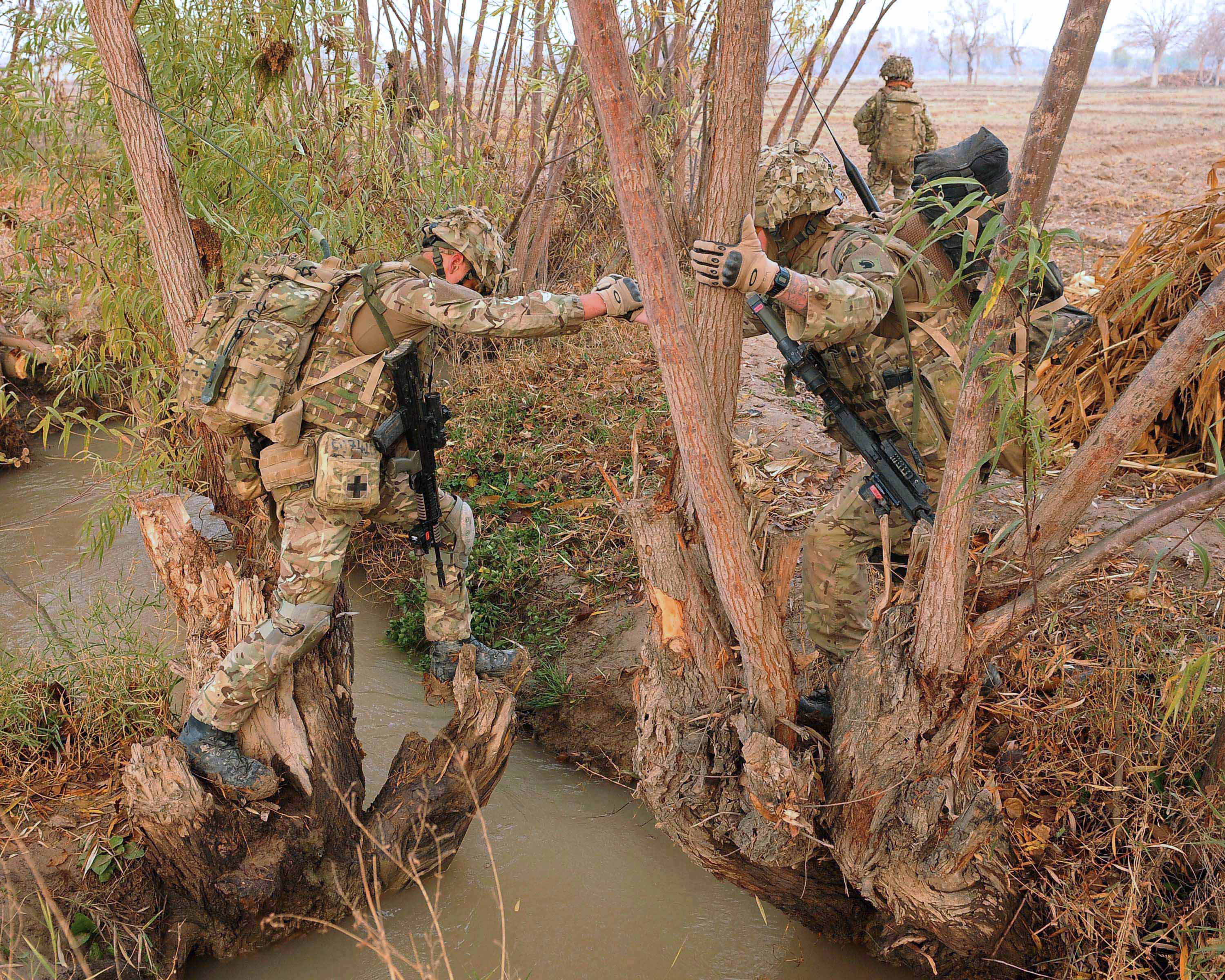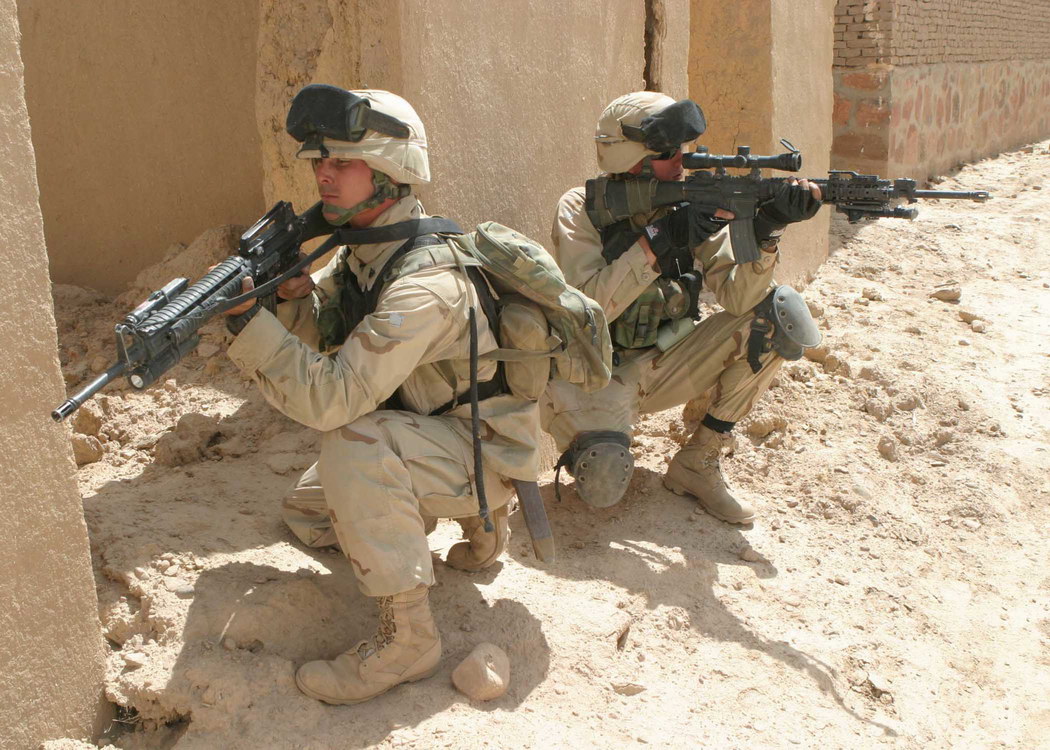|
MultiCam
MultiCam is a Military camouflage, camouflage pattern designed for use in a wide range of environments and conditions which was developed and is produced by American company Crye Precision. The pattern has found extensive adoption globally. Variants of it, some unlicensed, are in use with militaries worldwide, particularly with special forces/special operations forces units. The pattern is also available for purchase for civilian usage. Derived from the original standard pattern, additional specified variants were developed and later introduced in late 2013, those are "Aridity, Arid", "Tropics, Tropic", "Alpine tundra, Alpine" and "Black". History First unveiled and designed in 2002, MultiCam was designed for the use of the United States Army, U.S. Army in varied environments, seasons, elevations, and light conditions. It is a seven-color, multi-environment camouflage pattern developed by Crye Precision in conjunction with United States Army Soldier Systems Center. The patter ... [...More Info...] [...Related Items...] OR: [Wikipedia] [Google] [Baidu] |
Army Combat Uniform
The Army Combat Uniform (ACU) is the current combat uniform worn by the United States Army, U.S. Air Force, U.S. Space Force and some elements of the U.S. Coast Guard. Within the Air Force and Space Force, it is referred to as the OCP ( Operational Camouflage Pattern) Uniform, rather than the Army Combat Uniform. First unveiled in June 2004, it is the successor to the Battle Dress Uniform (BDU) and Desert Camouflage Uniform (DCU) worn from the 1980s and 1990s through to the mid-2000s, respectively. It is also the successor to the Airman Battle Uniform for the U.S. Air Force. Initially, it was made with the Universal Camouflage Pattern (UCP), but due to its ineffectiveness it was replaced by the Operational Camouflage Pattern (OCP). History Development In early 2004, some U.S. Army soldiers in Iraq were issued the "Close Combat Uniform", a variant of the Desert Camouflage Uniform (DCU) that featured new features such as shoulder pockets affixed with hook-and-loop faste ... [...More Info...] [...Related Items...] OR: [Wikipedia] [Google] [Baidu] |
Multi-Terrain Pattern
The Multi-Terrain Pattern (MTP) is the standard camouflage pattern of the British Armed Forces. It is a modified version of the Disruptive Pattern Material camouflage with Multicam colours. As part of the British Ministry of Defence's (MOD) Personal Equipment and Common Operational Clothing (PECOC) programme, three new camouflage patterns were considered for issue to British forces. These were a revised temperate Disruptive Pattern Material (DPM) using lighter colours, a new three-colour desert pattern with enhanced utility for night-time operations, and a hybrid four colour scheme using two colours from each of the previous patterns for use on webbing in all terrains. History Following an Urgent Operational Requirement for a camouflage uniform for the Afghan theatre of operations, and the success of a commercially available pattern (Crye's MultiCam) when tested in trials, a decision was made to use MultiCam as the basis of a new Multi-Terrain Pattern for British armed force ... [...More Info...] [...Related Items...] OR: [Wikipedia] [Google] [Baidu] |
Combat Shirt
The Army Combat Shirt (ACS) is a flame-resistant shirt developed and used by the United States Army as a supplementary addition to the Army Combat Uniform (ACU). The ACS is a stand-alone shirt designed specifically for use with the Improved Outer Tactical Vest (IOTV) in warm and hot weather instead of the blouse, and was introduced in 2007. It is intended to greatly increase user comfort through the use of lightweight, moisture-wicking, and breathable fabrics. The ACS was created in conjunction with the USMC's Flame Resistant Organizational Gear (FROG). The ACS, in conjunction with the Fire Resistant ACU (FRACU) trousers, provides neck-to-ankle protection against burns. Background Traditionally, flame-resistant uniforms have been reserved for military personnel such as aviators, fuel handlers and combat vehicle crew who were most likely to encounter fuel-related fires. However, the increasing frequency of improvised explosive devices (IEDs) in Afghanistan and Iraq during the 2000s ... [...More Info...] [...Related Items...] OR: [Wikipedia] [Google] [Baidu] |
Universal Camouflage Pattern
The Universal Camouflage Pattern (UCP) is a digital camouflage pattern formerly used by the United States Army in their Army Combat Uniform. Laboratory and field tests from 2002 to 2004 showed a pattern named "All-Over Brush" to provide the best concealment of the patterns tested. At the end of the trials, Desert Brush was selected as the winner over 12 other experimental patterns. The winning Desert Brush pattern was not used as the final Universal pattern. Instead, U.S. Army leadership utilized pixelated patterns of Canadian CADPAT and U.S. Marine Corps MARPAT, then recolored them based on three universal colors developed in the Army's 2002 to 2004 tests, to be called UCP with significantly less disruptive capability than either of its prior familial patterns. The final UCP was then adopted without field testing against other patterns. Soldiers serving in Iraq and Afghanistan questioned the UCP's effectiveness as a concealment method. Some felt that it was endangering the ... [...More Info...] [...Related Items...] OR: [Wikipedia] [Google] [Baidu] |
Future Force Warrior
Future Force Warrior was a United States military advanced technology demonstration project that was part of the Future Combat Systems project. The FFW project sought to create a lightweight, fully integrated infantryman combat system. It was one technology demonstration project in a series of network-centric, next-generation infantry combat projects the U.S. military have developed over the past decade, such as the Soldier Integrated Protective Ensemble program, Land Warrior, and Transformation of the United States Army. The Future Force Warrior concept envisioned the use of technologies such as nanotechnology, powered exoskeletons, and magnetorheological fluid-based body armor to provide the infantry with significantly higher force multiplier than the opposing force. However, the stated concept was not U.S. Army doctrine, and was not intended to answer every situation that Army After Next (the Army's buzzword for future fighting forces) would face; rather, the concept was me ... [...More Info...] [...Related Items...] OR: [Wikipedia] [Google] [Baidu] |
Desert Camouflage Uniform
The Desert Camouflage Uniform (DCU) is an arid-environment camouflage uniform that was used by the United States Armed Forces from the early-1990s to the early 2010s. In terms of pattern and textile cut, it is identical to the U.S. military's Battle Dress Uniform (BDU) uniform, but features a three-color desert camouflage pattern of dark brown, pale olive green (which is reported to look mint-colored on 1989/90 pattern DCUs), and beige, as opposed to the four-color woodland pattern of the BDU. It replaced the previous Desert Battle Dress Uniform (DBDU) which featured a six-color "chocolate chip" pattern of beige, pale olive green, two tones of brown, and black and white rock spots. Although completely phased out of frontline use in the U.S. Armed Forces, some pieces and equipment printed in the DCU camouflage pattern are used in limited numbers such as MOPP suits and/or vests. The DCU is made of the same materials as the Enhanced Hot Weather BDU (EHWBDU): 50/50 ripstop nylon a ... [...More Info...] [...Related Items...] OR: [Wikipedia] [Google] [Baidu] |
Military Camouflage
Military camouflage is the use of camouflage by an Military, armed force to protect personnel and equipment from observation by enemy forces. In practice, this means applying colour and materials to military equipment of all kinds, including vehicles, ships, aircraft, gun positions and battledress, either to conceal it from observation (crypsis), or to make it appear as something else (mimicry). The French slang word ''wikt:camouflage, camouflage'' came into common English usage during World War I when the concept of visual deception developed into an essential part of modern military tactics. In that war, long-range artillery and observation from the air combined to expand the field of fire, and camouflage was widely used to decrease the danger of being targeted or enable surprise. As such, military camouflage is a form of military deception in addition to cultural functions such as political identification. Camouflage was first practiced in simple form in the mid 18th centur ... [...More Info...] [...Related Items...] OR: [Wikipedia] [Google] [Baidu] |
Cold-weather Warfare
Cold-weather warfare, also known as cold-region warfare, arctic warfare or winter warfare, encompasses military operations affected by snow, ice, thawing conditions, or cold, both on land and at sea, as well as the strategies and tactics used by military forces in these situations and environments. Cold-weather conditions occur year-round at high elevation or latitudes, and elsewhere materialize seasonally during the winter period. Mountain warfare often takes place in cold weather or on terrain that is affected by ice and snow, such as the Alps and the Himalayas. Historically, most such operations have been during winter in the Northern Hemisphere. Some have occurred above the Arctic Circle where snow, ice, and cold may occur throughout the year. At times, cold—or its aftermath, thaw—has been a decisive factor in the failure of a campaign, as with the French invasion of Russia in 1812, the Soviet invasion of Finland in 1939, and the German invasion of the Soviet Union ... [...More Info...] [...Related Items...] OR: [Wikipedia] [Google] [Baidu] |
Jungle Warfare
Jungle warfare or woodland warfare is warfare in forests, jungles, or similar environments. The term encompasses military operations affected by the terrain, climate, vegetation, and wildlife of densely-wooded areas, as well as the strategies and tactics used by military forces in these situations and environments. The jungle has a variety of effects on military operations. Dense vegetation can limit lines of sight and arcs of fire, but can also provide ample opportunity for camouflage and plenty of material with which to build fortifications. Jungle terrain, often without good roads, can be inaccessible to vehicles and so makes Military logistics, logistical supply and transport difficult, which in turn places a premium on air mobility. The problems of transport make engineering resources important as they are needed to improve roads, build bridges and airfields, and improve water supplies. Jungle environments can also be inherently unhealthy, with various tropical diseases tha ... [...More Info...] [...Related Items...] OR: [Wikipedia] [Google] [Baidu] |
Desert Warfare
Desert warfare is warfare in deserts or similar arid or semi-arid environments. The term encompasses military operations affected by the terrain, climate, and resource availability of these areas, as well as the strategies and tactics used by military forces in these situations and environments. Desert warfare is distinct from other types of warfare in other environments and terrains, in that the desert is generally considered very inhospitable. The hot temperatures in the day and the cold temperatures in the night, the scarcity of food, water, and plant life, and the lack of cover and concealment, affect how military forces operate in desert environments. The heat and lack of water can sometimes be more dangerous than the enemy. Properties and tactics The barrenness of the desert makes the capture of key cities essential to ensure the ability to maintain control over important resources, primarily clean water, and being able to keep a military well supplied. As such, that mak ... [...More Info...] [...Related Items...] OR: [Wikipedia] [Google] [Baidu] |
Near-infrared Signature Management Technology
Multi-spectral camouflage is the use of counter-surveillance techniques to Stealth technology, conceal objects from detection across several parts of the electromagnetic spectrum at the same time. While traditional military camouflage attempts to hide an object in the visible spectrum, multi-spectral camouflage also tries to simultaneously hide objects from detection methods such as infrared signature, infrared, radar cross-section, radar, and extremely high frequency, millimetre-wave radar imaging. Among animals, both insects such as the Smerinthus ocellatus, eyed hawk-moth, and vertebrates such as tree frogs possess camouflage that works in the infra-red as well as in the visible spectrum. History The English zoologist Hugh Cott, in his 1940 book ''Adaptive Coloration in Animals'', wrote that some caterpillars such as the eyed hawk-moth ''Smerinthus ocellatus'', and tree frogs such as the red-snouted treefrog ''Scinax ruber, Hyla coerulea'', are coloured so as to blend with th ... [...More Info...] [...Related Items...] OR: [Wikipedia] [Google] [Baidu] |







